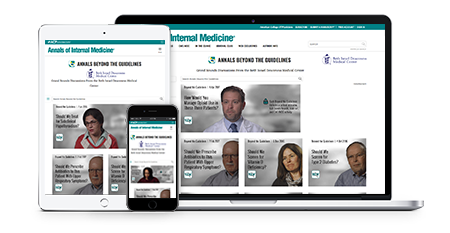Annals Beyond the Guidelines
The proportion of patients with new-onset heart failure who have preserved rather than reduced left ventricular ejection fraction (HFpEF and HFrEF) has been increasing over recent decades. In fact, HFpEF now outweighs HFrEF as the predominant heart failure subtype and likely remains underdiagnosed in the community. This is due in part to an aging population and a rise in other risk factors for HFpEF, including obesity and associated cardiometabolic disease. Whereas the diagnosis of HFrEF is relatively straightforward, the diagnosis of HFpEF is often more challenging because there can be other causes for symptoms, including dyspnea and fatigue, and cardinal physical examination findings of elevated jugular venous pressure or pulmonary congestion may not be evident at rest. In 2022, the American College of Cardiology, the American Heart Association, and the Heart Failure Society of America published a comprehensive guideline on heart failure that included recommendations for the management of HFpEF. The use of diuretics for the management of congestion remained the only class 1 (strong) recommendation. New recommendations included broader use of sodium–glucose cotransporter-2 inhibitors (SGLT2i, class 2a), and angiotensin receptor–neprilysin inhibitors (class 2b). In 2023, the American College of Cardiology published an expert consensus decision pathway for the management of HFpEF that suggests treatment strategies based on sex assigned at birth, ejection fraction, clinical evidence of congestion, and candidacy for SGLT2i therapy. Here, 2 experts, a cardiologist and a geriatrician, discuss their approach to the diagnosis and management of HFpEF and how they would apply guidelines to an individual patient.



